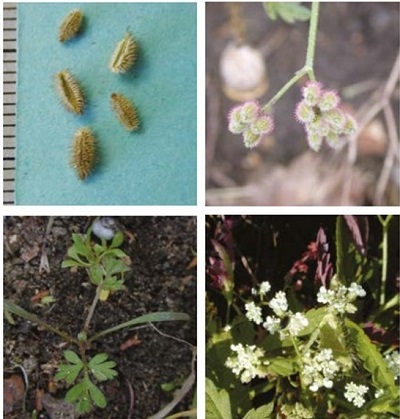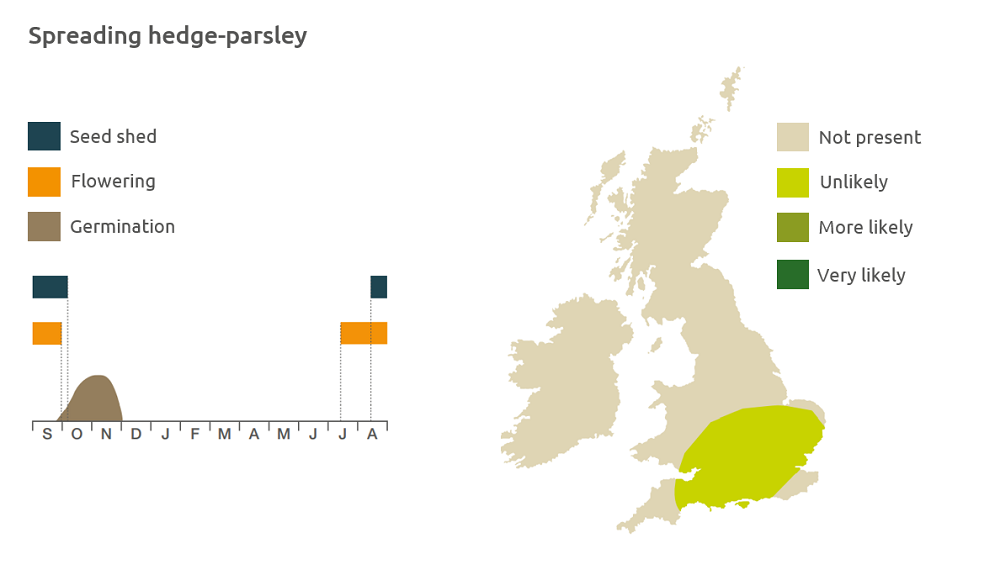- Home
- Knowledge library
- Distribution and biology of spreading hedge-parsley in the UK
Distribution and biology of spreading hedge-parsley in the UK
Spreading hedge-parsley is an increasingly rare weed found in Southern England. Find out how to identify and control it.
Overview
Spreading hedge-parsley (Torilis arvensis) germinates in autumn, suggesting that the seed is short-lived. The fruit is transported by hooking on to fur or clothing.
- It has value to biodiversity
Description
It is a much-branched hairy annual that grows close to the ground, 10–20 cm tall. The leaves are feathery like those of carrot, divided into three separate leaflets which are further divided. The small white flowers are in little clusters of 3 to 5. The fruit is covered with hooked spines.
Key features
Young plant: It is slightly hairy.
Plant: The stem is finely grooved.

Location and life cycle

Geographic distribution
Spreading hedge-parsley is found in lowland areas, usually in field margins and late-sown crops or in waste and disturbed ground. It is increasingly rare and geographically isolated in small pockets in the south of England.
Soil type
It is found on chalky clay soils of low moisture and fertility but can grow on sands and gravels.
Seed statistics
- Seed longevity: Short lived
Management
Spreading hedge-parsley is not competitive to modern crops, and its late flowering disadvantages it in early harvested and early-ploughed crops.
For advice on herbicides, please speak with your agronomist or adviser.
When was this information last updated?
This page is based on content from the encyclopaedia of arable weeds publication. Since it was first released in 2008, the publication has been redesigned several times but not revised. However, it remains a good foundation for general information on the distribution and biology of weeds.

